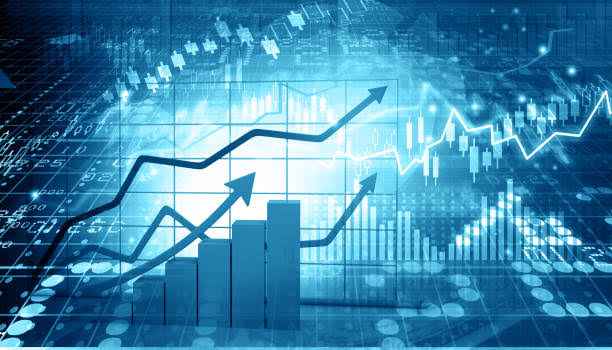Introduction
India, the world’s fifth-largest economy by nominal GDP, is at a critical juncture in its economic journey. Over the first few decades, the nation has made significant strides in its development, transforming from a largely agrarian society to a growing industrial powerhouse. However, India now finds itself across the road. Where it must navigate complex global dynamics, internal challenges, and ambitious goals to secure its future economic prosperity.
As the global economy undergoes seismic shifts, Indian playmakers, businessmen, and citizens are focused on charting a new economic path one that is sustainable, inclusive, and globally competitive.
Economic Challenges
- Unemployment and Skills Gap: A key challenge for India is its young and rapidly growing population. While this offers a demographic dividend, it also pressures the labor market. India is home to the world’s largest youth population, but the country has struggled with high levels of unemployment, especially among the educated youth. The skill gap between what the market needs and what the education system provides remains a significant issue. If not addressed, this could lead to frustration and instability.
- Income Inequality and Poverty: Income inequality in India has been rising. The wealth gap between urban and rural areas, as well as between different social groups, continues to widen. While the middle class has expanded, millions still live in poverty, especially in rural areas. Despite economic growth, the benefits of this growth have not always been evenly distributed.
- Agricultural Distress: Agriculture remains a vital sector, employing over 40% of India’s workforce. Yet, it contributes less than 20% to GDP. Agricultural productivity is low, and farmers face challenges related to inadequate infrastructure, volatile weather conditions, and insufficient access to credit. The recent farmers’ protests highlight the deep dissatisfaction with agricultural policies and the need for reforms to make the sector more productive and sustainable.
- Infrastructure Bottlenecks: India’s infrastructure has lagged behind its economic ambitions. Poor roads, inadequate public transport, an unreliable power supply, and inefficient ports hinder economic growth. Though significant investments in infrastructure have been made in recent years, the country still faces an infrastructure deficit that must be addressed to enable smoother business operations and attract foreign investment.
- Environmental Sustainability: India’s rapid industrialization has placed enormous pressure on its natural resources. The country faces severe air and water pollution, deforestation, and other environmental concerns. Managing economic growth while ensuring sustainability is a pressing challenge, especially as India strives to meet global climate goals.
Opportunities
While these challenges are formidable, India also has significant opportunities to shape its economic future. The confluence of domestic reform, technological advancement, and global market shifts presents a unique chance for India to emerge as a global economic leader.
- Digital Transformation and Innovation: India’s technological ecosystem is rapidly evolving. The country is home to a thriving IT services sector, a burgeoning startup culture, and significant strides in fields like artificial intelligence, fintech, and space technology. The government’s Digital India initiative has accelerated digital infrastructure, promoting e-governance, digital payments, and the growth of e-commerce. Digital transformation is playing a key role in enabling financial inclusion, creating new business opportunities, and bridging gaps in sectors like healthcare and education.
- Manufacturing and “Make in India”: The government’s Make in India initiative, launched in 2014, aims to make India a global manufacturing hub. With China facing geopolitical and supply chain challenges, many companies are looking to diversify their production bases. India stands to benefit from this shift, particularly in sectors like electronics, textiles, and automobiles. The implementation of production-linked incentives (PLIs) has already started to attract investment in key industries.
- Renewable Energy Potential: India has committed to ambitious renewable energy goals, aiming to achieve 500 GW of non-fossil fuel energy capacity by 2030. The country is already one of the largest producers of solar power in the world, and its potential for wind, solar, and hydropower is immense. Investments in green energy not only provide a solution to environmental concerns but also position India as a leader in the emerging global green economy.
- Global Trade and Foreign Investment: India’s position in the global supply chain is becoming increasingly important. With the rise of protectionism in various parts of the world and the shifting of manufacturing away from China, India is well-placed to attract foreign direct investment (FDI). Recent trade agreements with countries like the UAE and Australia, coupled with efforts to improve the ease of doing business, make India an attractive destination for global companies looking to diversify their production.
Conclusion
In conclusion, India stands at a pivotal moment in its economic journey. While the country faces significant challenges such as unemployment, income inequality, inflation, and global uncertainties it also has immense growth opportunities. With a young and dynamic workforce, ongoing reforms, a growing digital economy, and a focus on sustainable development, India has the potential to become a global economic leader. By addressing its structural issues, improving infrastructure, and ensuring inclusive growth, India can chart a path toward long-term economic prosperity and stability. The choices made today will determine the shape of India’s economic future in the decades to come.
You may also like to read: Ratan Tata: The Visionary Leader and Philanthropy

